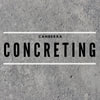|
Handling, transporting, and mixing concrete must be coordinated with finishing and placing operations. In fact, the timing must be perfect since it should not be deposited too rapidly on the surface, or the contractor will face several finishing issues. Therefore, it is important to only hire a qualified and experienced concreting contractor in Canberra.
If you are constructing concrete slabs, the concrete should be placed along the perimeter, with each batch piled against previously dispatched slabs. This will ensure that each concrete slab has cured according to industry standards. Consolidation In other types of construction, concrete should be placed in forms, then it must be consolidated after. This is because consolidation will compact fresh concrete so it can mould within and around the form. It will also eliminate honeycomb, stone pockets, and entrapped air. Also, when concrete is vibrated, it will no longer aggregate particles that settle in the forms under the action of gravity, and the large entrapped air voids will no longer appear on the surface. This is the main reason why consolidation is essential since it will ensure that concrete is tightly placed. Finishing For concrete that will be visible on patios, driveways, and various types of structures, finishing is a must. In fact, a concrete surface can be finished in several ways, depending on its intended application. Some of the options will include textures, colours, design, and patterns on the surface. Some surfaces may require a different approach like screeding and strike off to properly place elevation and contour. At the same time, other surfaces may need a floated, broomed, or trowelled finish. The process Screeding is a common finishing method, and it is usually done to cut off excess concrete and bring the top surface to correct grade. Concreters also use the bull floating method to eliminate high and low spots and embed large aggregate particles after screeding. Jointing is also required to eliminate random cracks and is usually done by inserting plastic strips, metal, wood, or preformed joint material into the unhardened concrete. After joining, the concrete must be floated with metal, wood, or a finishing machine with float blades. This will prevent any imperfections like voids and humps. It also compacts the mortar at the surface in preparation for further finishing activities. However, trowelling should not be done on a surface that has not been floated recently because it is not an adequate finish procedure. Trowelling without floating may lead to imperfections and cracks on the concrete surface. Lastly, brooming should be done on the surface of the concrete before it has thoroughly hardened since it will create a slip-resistant coating for safety reasons. Comments are closed.
|
AuthorWrite something about yourself. No need to be fancy, just an overview. Archives
April 2024
Categories |

 RSS Feed
RSS Feed